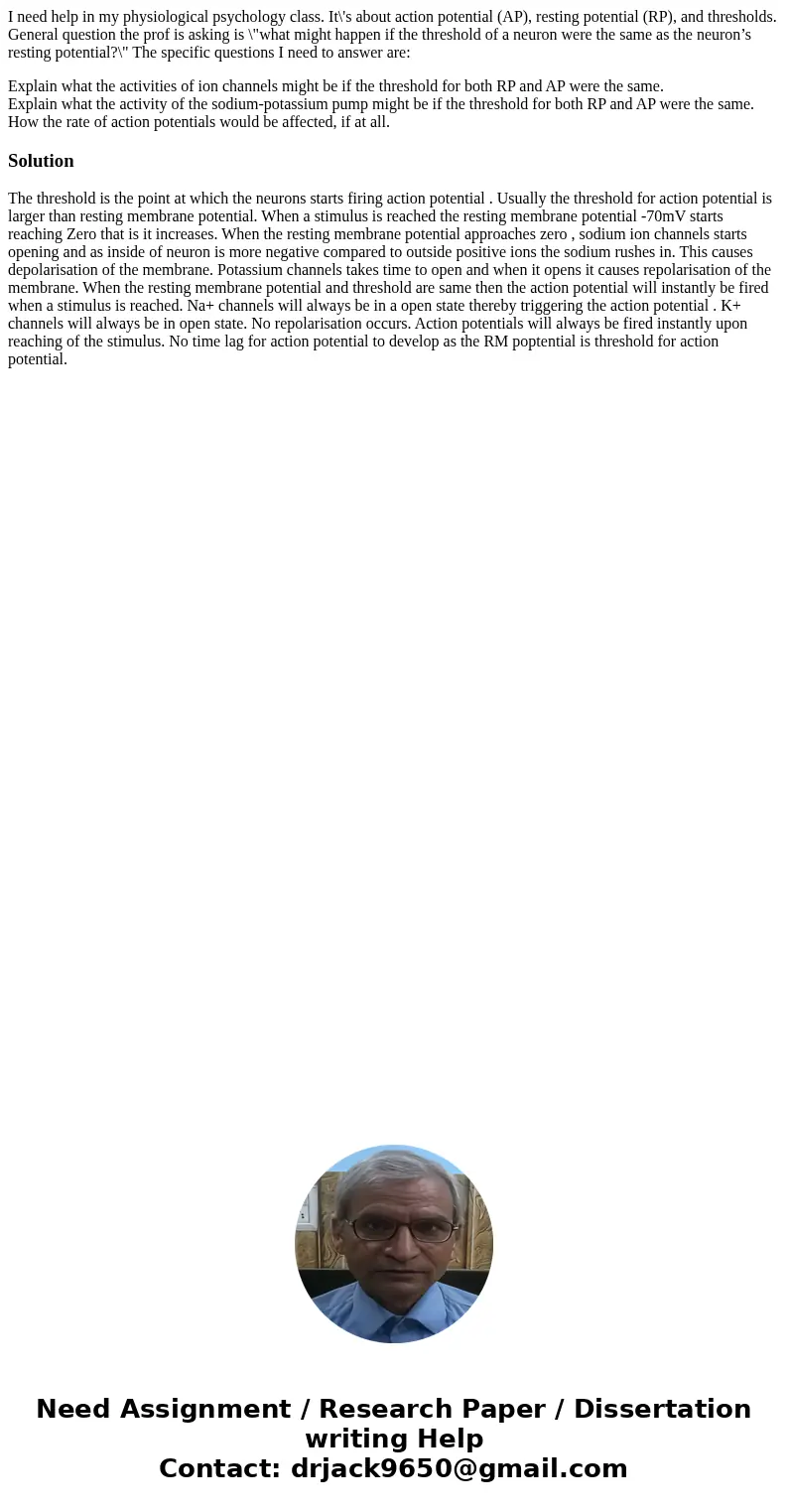I need help in my physiological psychology class Its about a
I need help in my physiological psychology class. It\'s about action potential (AP), resting potential (RP), and thresholds. General question the prof is asking is \"what might happen if the threshold of a neuron were the same as the neuron’s resting potential?\" The specific questions I need to answer are:
Explain what the activities of ion channels might be if the threshold for both RP and AP were the same.
Explain what the activity of the sodium-potassium pump might be if the threshold for both RP and AP were the same.
How the rate of action potentials would be affected, if at all.
Solution
The threshold is the point at which the neurons starts firing action potential . Usually the threshold for action potential is larger than resting membrane potential. When a stimulus is reached the resting membrane potential -70mV starts reaching Zero that is it increases. When the resting membrane potential approaches zero , sodium ion channels starts opening and as inside of neuron is more negative compared to outside positive ions the sodium rushes in. This causes depolarisation of the membrane. Potassium channels takes time to open and when it opens it causes repolarisation of the membrane. When the resting membrane potential and threshold are same then the action potential will instantly be fired when a stimulus is reached. Na+ channels will always be in a open state thereby triggering the action potential . K+ channels will always be in open state. No repolarisation occurs. Action potentials will always be fired instantly upon reaching of the stimulus. No time lag for action potential to develop as the RM poptential is threshold for action potential.
 Homework Sourse
Homework Sourse